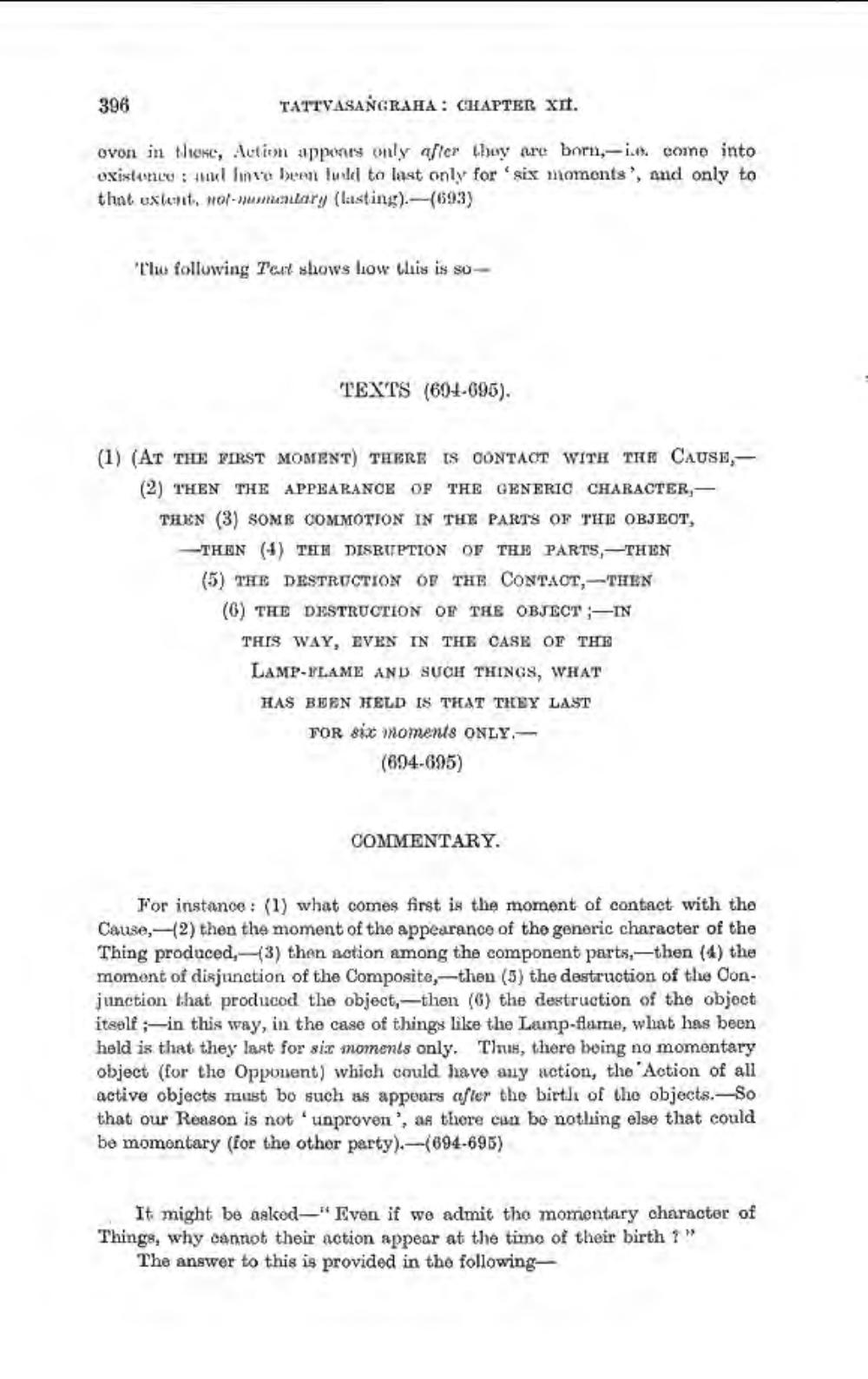________________
396
TATTVASANGRAHA : CHAPTER XI.
ovon in Non, Actit appears only after they are born,-i.. come into oxistence : 40 live been luild to last only for six moments, and only to that uxlent, Nolwentary (lasting).-(693)
The following Teat shows how this is su
TEXTS (694-695).
(1) (AT THE FIRST MOMENT) THERE IS CONTACT WITH THE CAUSE,
(2) THEN THE APPEARANCE OF THE GENERIC CHARACTER, - THEN (3) SOME COMMOTION IN THE PARTS OF THE OBJECT, -THEN (4) TAN DISRUPTION OF THE PARTS, THEN (5) THE DESTRUCTION OF THE CONTAOT, THEN (6) THE DESTRUCTION OF THE OBJECT IN THIS WAY, EVEN IN THE CASE OF THE LAMP-ILAME AND SUCH THINGS, WHAT HAS BEEN HELD IS THAT THEY LAST TOR sit moments ONLY.
(694-695)
COMMENTARY.
For instanoe : (1) what comes first is the moment of contact with the Cause,-(2) then the moment of the appearance of the generic character of the
Thing produced, -3) then action among the component parts,—then (4) the moment of disjunction of the Composite,-then (5) the destruction of the Conjunction that produced the object,-then (6) the destruction of the object itself ;-in this way, in the case of things like the Lamp-flame, what has been held is that they last for sit moments only. Thus, there being no momentary object (for the Opponent) which could have any action, the Action of all active objects must bo such as appears after the birth of the objects.So that our Reason is not 'unproven', as there cua bo nothing else that could be momentary (for the other party).-(694-695)
It might be asked—" Even if we admit the momentary character of Things, why cannot their action appear at the time of their birth "
The answer to this is provided in the following




